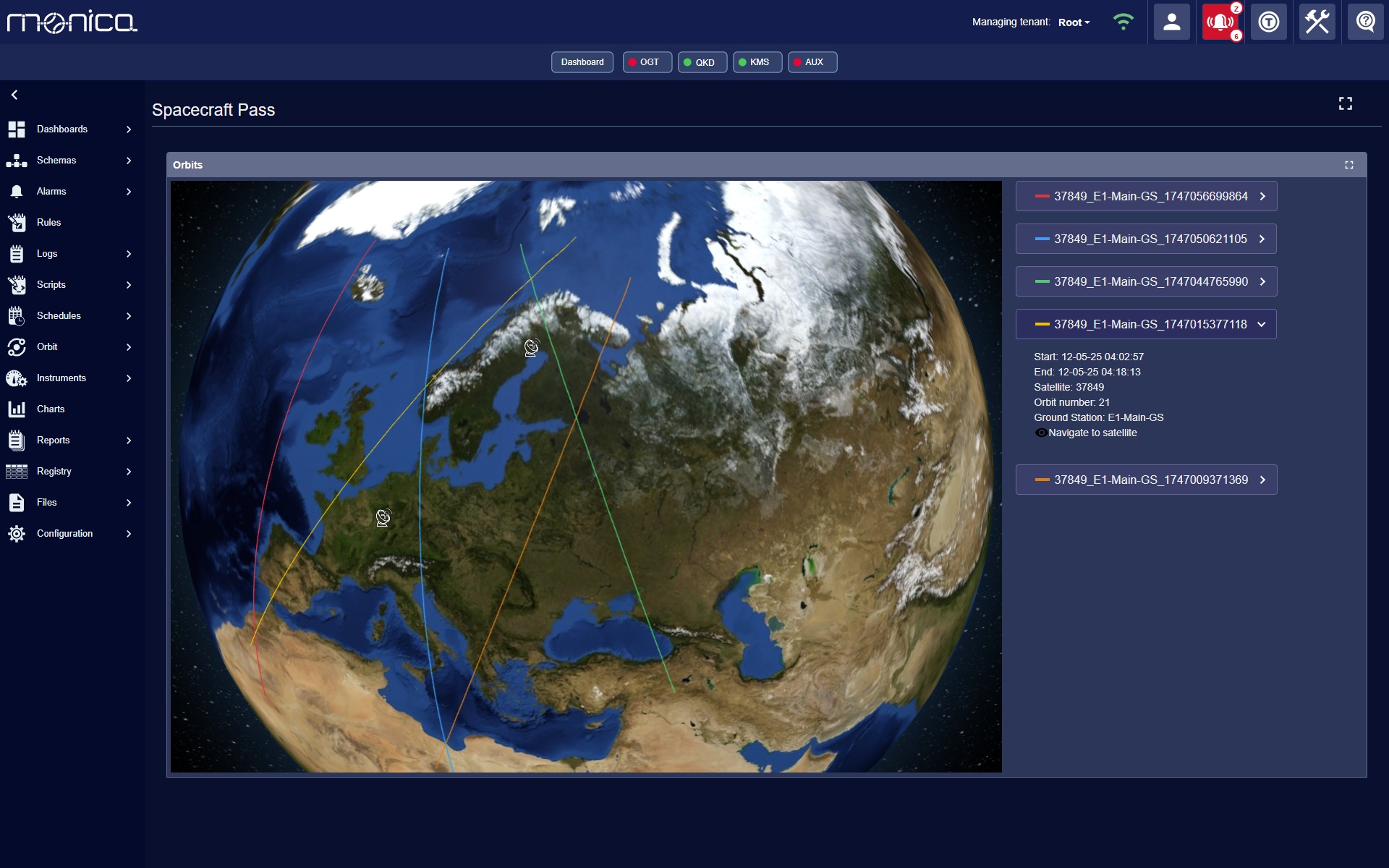Inside Monica v7.3.0: Features, Improvements, and Insights
Our Monica development team has been working hard this year, and we’re excited to announce another release of Monica - v7.3.0.
Version 7.3 summary
This release includes the following enhancements:
- SNMP Browser
- File manager and FTP instrument
- OPC-UA protocol implementation
- Parameter monitor widget
- Schema improvements
- Orbit 3D visualisation
- Other mid-size features
- Spectrum Analyser improvements
- Default user procedure
- Menu management
- Driver Editor - bulk parameter edit
Kudos to our talented team for making this happen - you are the best!
Let’s take a closer look at the improvements and their benefits.
1. SNMP Browser
In Monica v6.4, we introduced an integrated SNMP driver builder, with the codename xMIB. After 2.5 years of using it to beef up our SNMP driver library, we gathered extensive feedback from integrators and customers, and decided it was time for a major overhaul.
We elevated it from the confines of Driver Editor, created its own menu entry, and renamed it to - SNMP Browser. The main use case has shifted from a one-time driver creation wizard to a tool for modifying existing drivers, exploring MIB files, executing commands on SNMP devices, and debugging their behaviour. The SNMP WALK function is now a standard feature, no longer requiring MIB file import. Users can perform these actions independently - either MIB file import, SNMP WALK, or both.
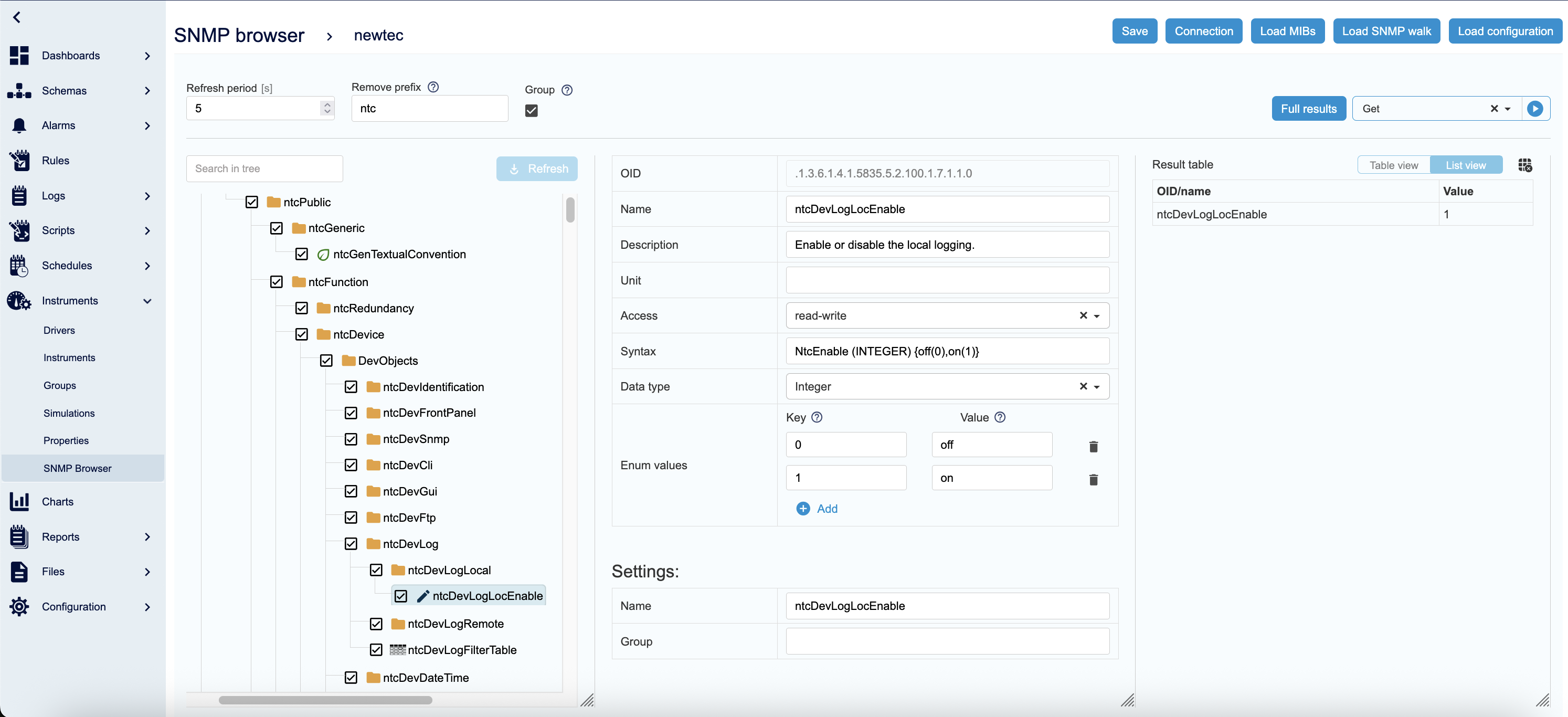
Monica now supports the persistence of MIB files along with the entire SNMP browser configuration, allowing users to save SNMP browsing or driver creation sessions for later use. Users can attach MIB files to drivers, and the existing Driver Editor includes an integrated version of SNMP browser. One primary goal was to facilitate an incremental, step-by-step driver creation process rather than a single, large, monolithic action.
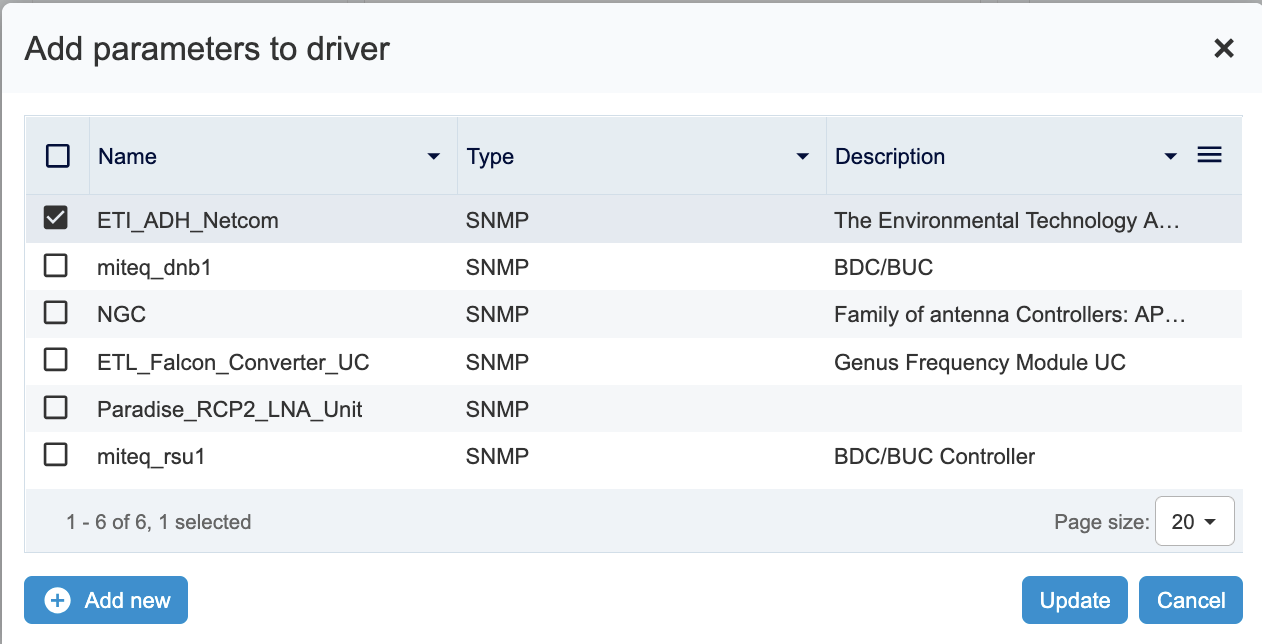
The device interaction actions have been extended with the classic SNMP commands:
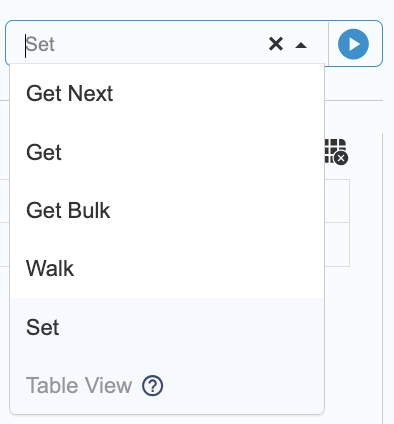
The mapping of MIB files into SNMP drivers has improved with several new options:
- Column-based table polling
- Name prefix auto-removal
- Mapping MIB tree groups to Monica parameter groups
- All MIB fields fully editable
- SNMPv3 support
- Import of SNMP WALK data in iReasoning and Net-SNMP formats
- Easy filtering of SNMP tree by node name
- Multi-select nodes and edit all at once
2. File manager and FTP instrument
Our main goal for this version of Monica was to enable ingesting and persisting files through an instrument, and unpacking them into regular parameters using existing tools. This seemingly simple user story led us to creation of a completely new module in Monica - File Manager. Its primary function is to persist and manage files in Monica. Files can be saved in the database with an optional retention duration (per file, file-type or owner-type) or in a cache. Both methods ensure file consistency in highly available deployments, as both the database and caches are replicated, unlike traditional filesystem-based approachs.
The files can be used in the following modules:
- standalone in File Manager
- instrument parameters - new File type allows for uploading and downloading files via instrument parameters
- instrument properties - a persistent file can be linked to an instrument property - i.e. a device User Manual or a picture of the device
- script parameter - scripts can have files as inputs
- system property - files can be persistently integrated inside system properties - i.e. Operator’s manual
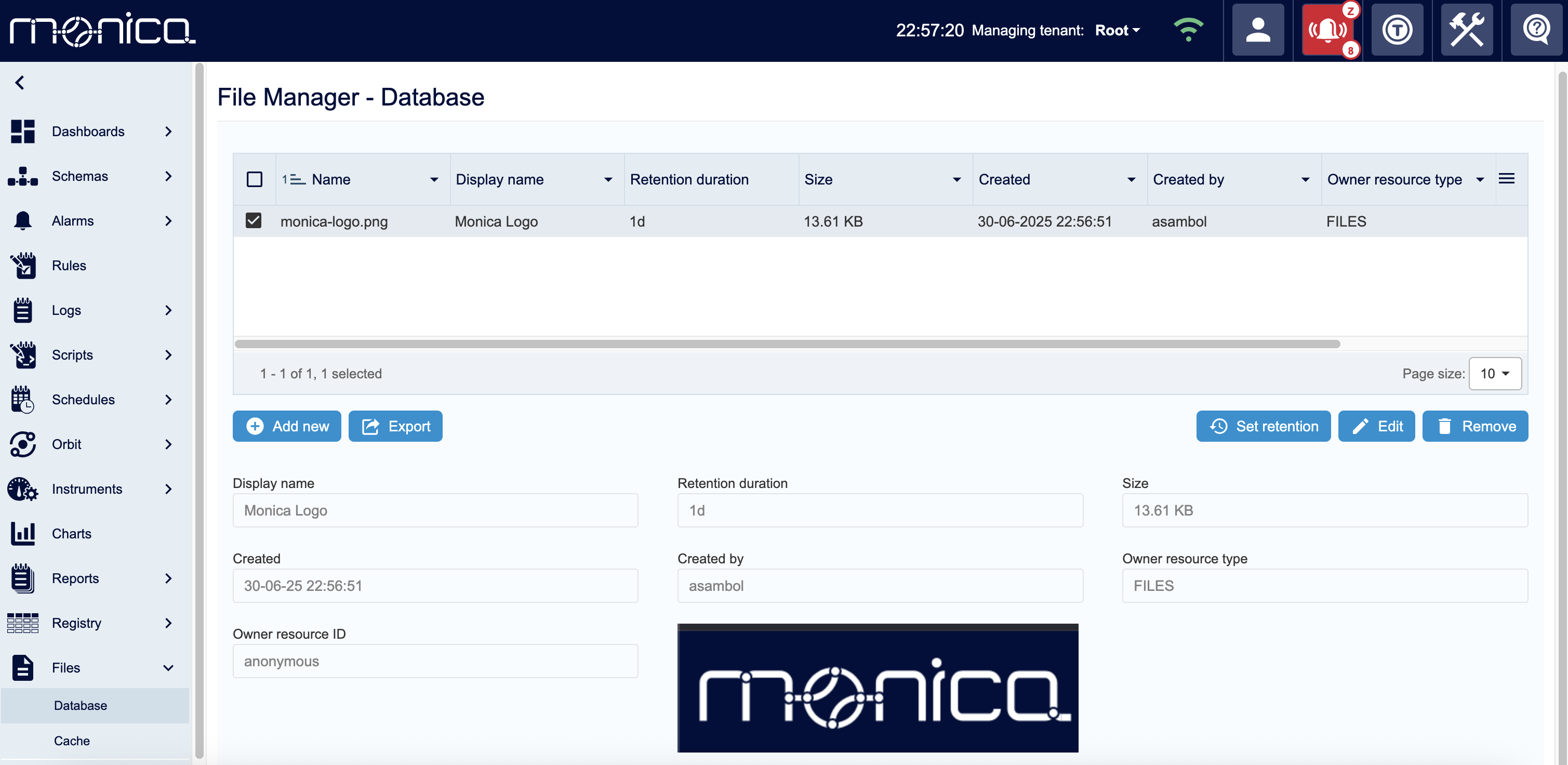
The second part of this feature is the FTP instrument revamp, which connects instruments with the new File features. This instrument type is now a general File instrument type, capable of interfacing with various filesystem types: FTP, FTPS, SFTP and Local. In addition to file download and upload in conjunction with the File Manager, it also supports basic file operation commands: ls, cp, mv, rm.
Future improvement we have in mind is supporting file-type parameters for other instrument types, such as HTTP.
3. OPC-UA protocol implementation
OPC-UA, or Open Platform Communications Unified Architecture, is a widely used protocol in industrial automation. We encountered it while integrating Optical Ground Station equipment into Monica. This flexible and powerful protocol supports various concepts from other protocols, including:
- Publish-subscribe and Polling modes
- Remote Procedure Calls
- Robust security
The new instrument type in Monica for OPC-UA incorporates all concepts from other protocols, along with additional features, such as retrieving driver details directly from the OPC-UA server.
A new feature in Monica has been added in the scope of the OPC-UA protocol - Parameter Bulk Set, enabling efficient Remote Procedure Calls.
Users can set multiple parameters simultaneously, with the instrument in charge of grouping the parameters into as few method calls as possible.
A future improvement we have in mind is supporting the Bulk Set for other protocols, such as HTTP/REST and raw TCP.
4. Parameter monitor widget
Monica previously had two very similar dashboard widgets - Parameter Monitor and Command Sender, with similar use cases, except one being for monitoring, and the other one for controlling parameter values. These widgets are now consolidated and drastically improved - becoming a very flexible table creation tool.
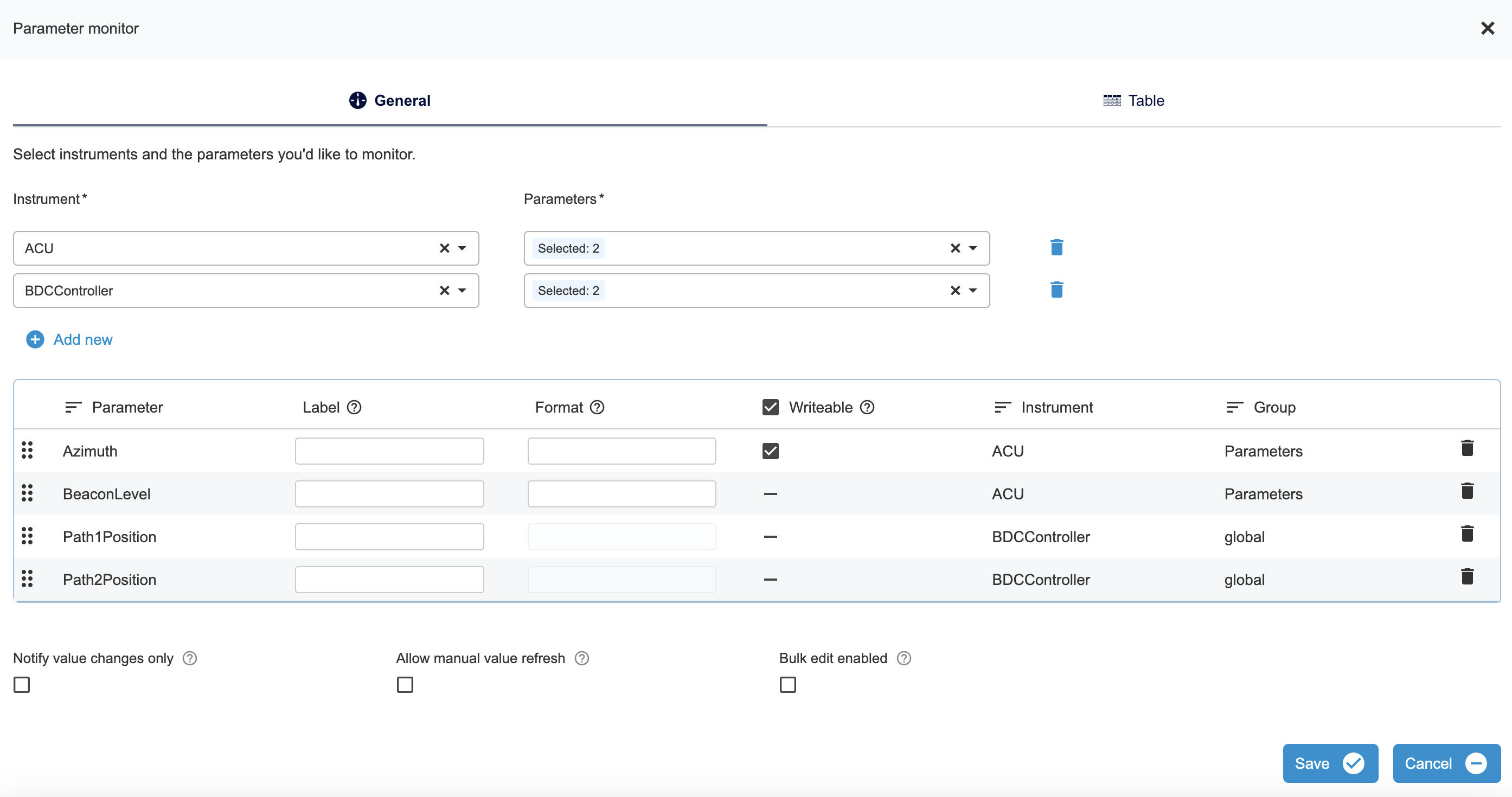
This allows for manual ordering of parameters, choosing visible columns, which parameters are editable, bulk vs. singular edit mode and so on.
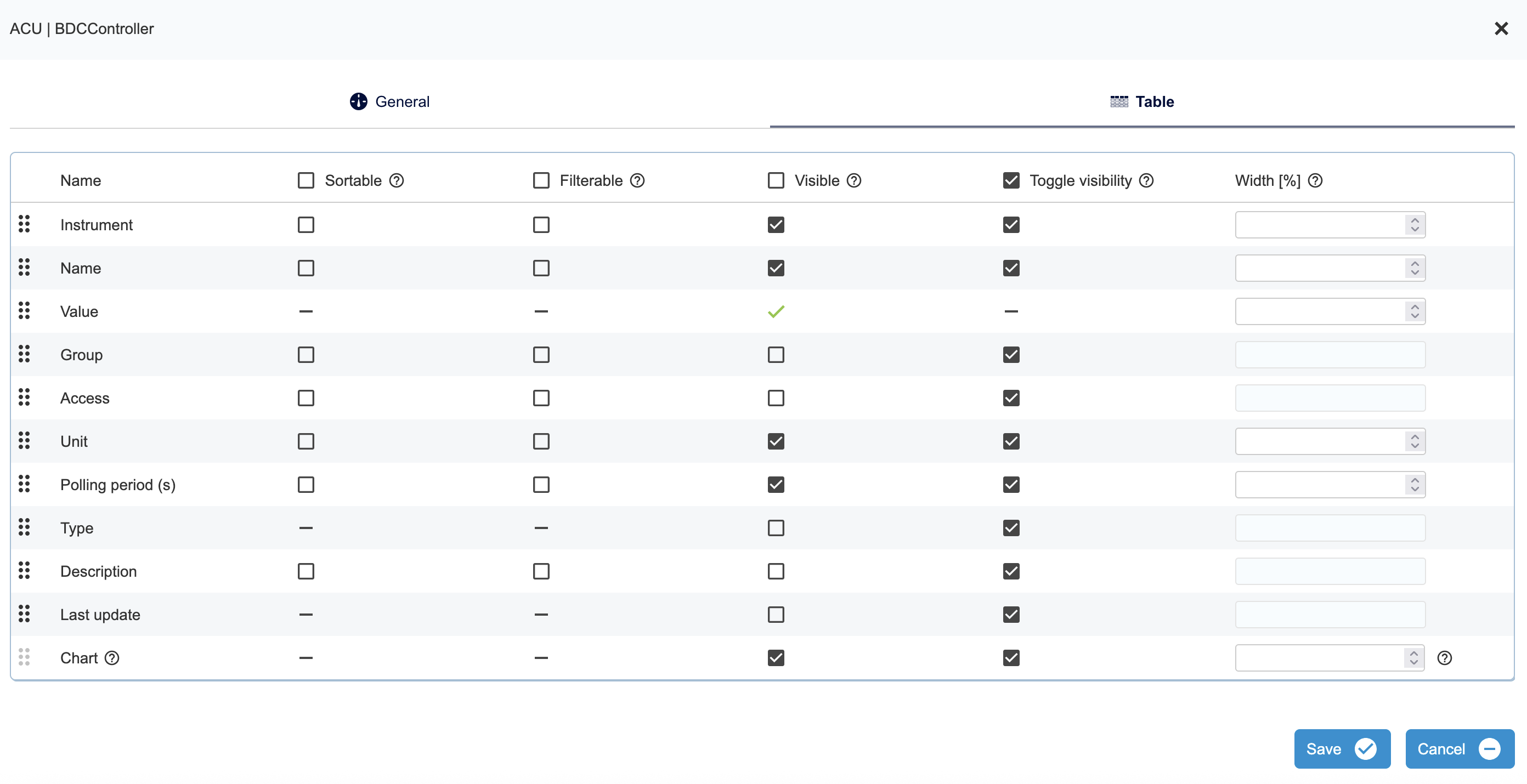
In addition to regular instruments, instrument group parameters are now also supported by the widget. The component used for displaying the table is the same one as on the Instrument Manager page, achieving the same user experience on both screens.
The configuration above results in the following widget is displayed below.

5. Schema improvements
Almost every new version of Monica brings new features and improvements in our Schema creation tool. Monica v7.3 brings improvements described in the following sections.
5.1 Path highlighting changes
In previous versions of the path highlighting feature, the internal state was always propagated for components which had one state. This configuration is now more flexible, allowing for combining the internal state with input severities to determine the output severity.

5.2 Components without drivers
Our initial design choice for schema components treated these as graphical representations of specific devices. This approach created rigidity when drawing schemas with similar devices from different manufacturers, requiring us to create a new component for each manufacturer, even when they were nearly identical.
With this change, operator can define schema components without a device driver, create placeholders, and fill them once the component is bound to a schema. This flexibility simplifies schema creation and enables easy swapping of physical devices from different manufacturers without significant modifications to the main schema.
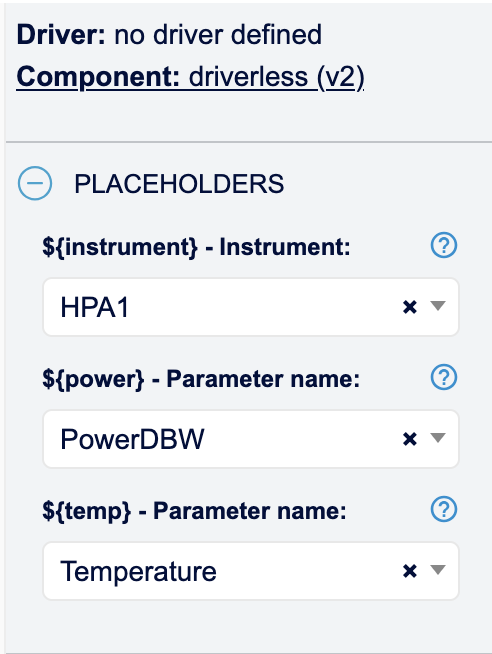
5.3 Multiply and layout into grid
We have enhanced the process of creating grid layouts by adding a feature to multiply selected shapes and arrange them in a grid.
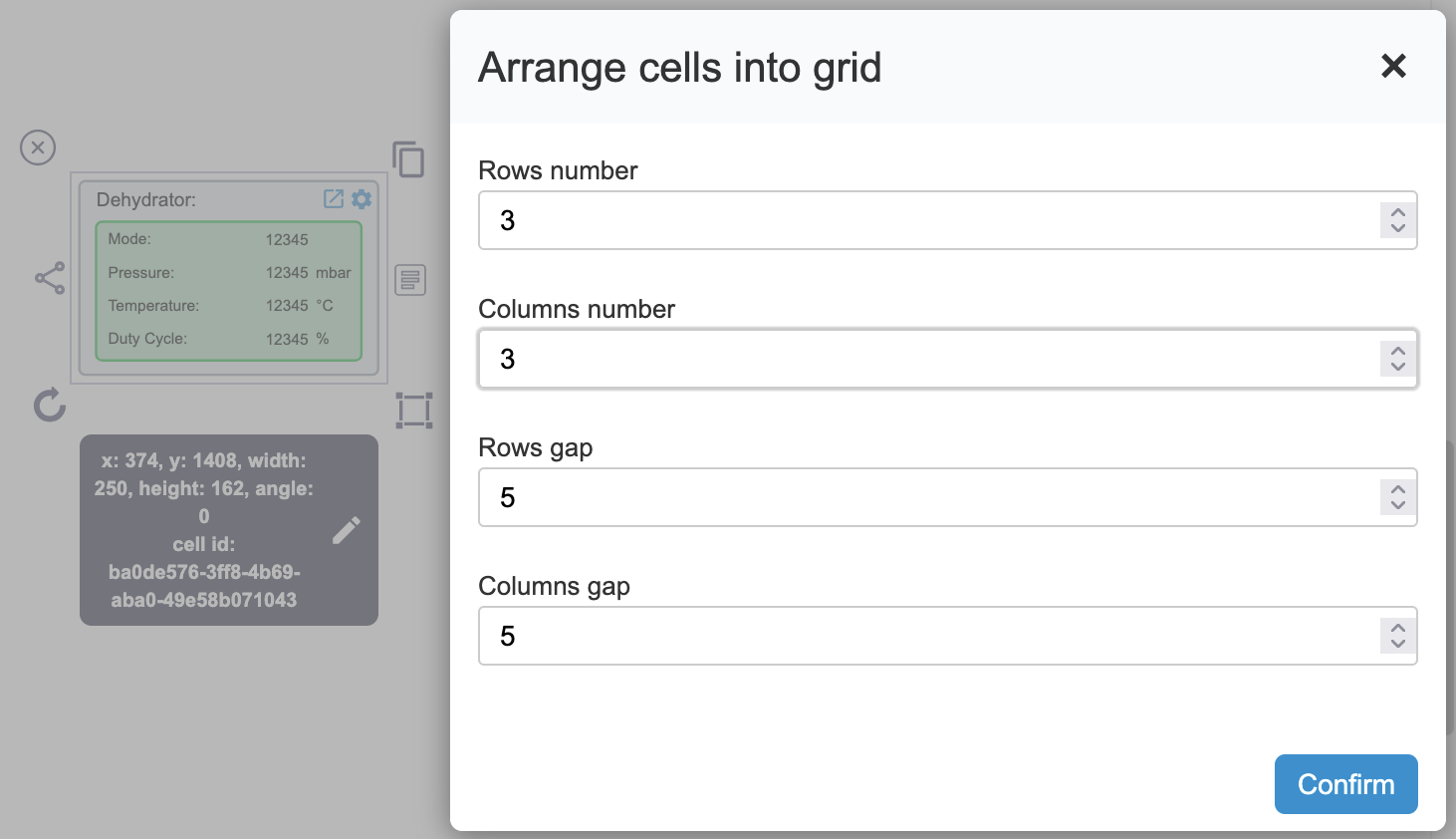
After multiplying, it looks like this:
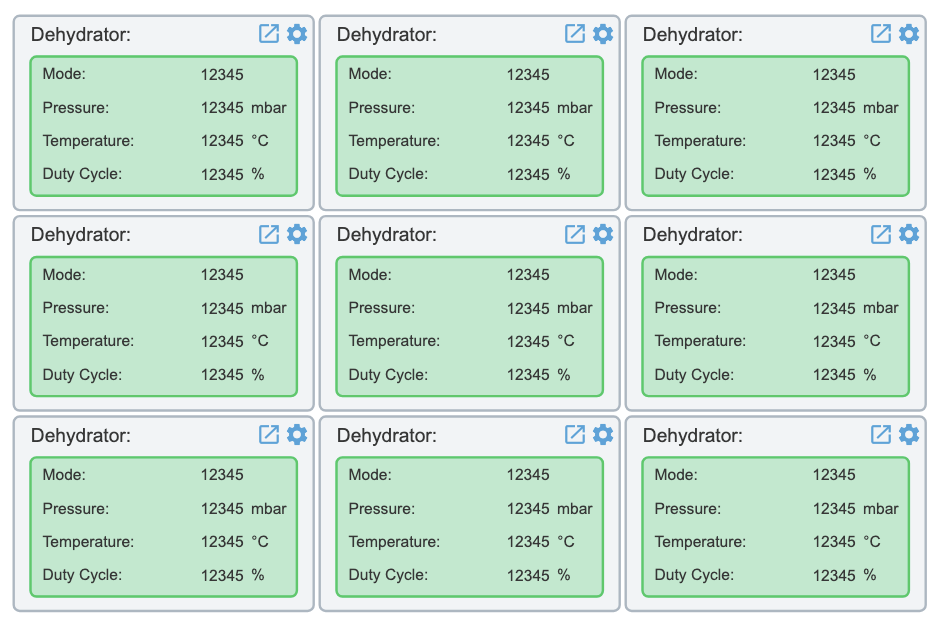
This option can also be used to arrange existing shapes into a grid layout, without multiplying them.
5.4 Editing multiple shapes at once
If the operator selects multiple shapes in the schema editor, their common properties will appear as editable in the right pane, allowing for editing as if only one shape was selected.
6. Orbit 3D visualisation
In the scope of the Orbit module introduced in Monica v7.2, we added the support to ingest orbital files, such as TLE and to schedule satellite passes based on them. With this update, it’s possible to visualise each pass in relation to the chosen ground station, using an interactive 3D control shown below.
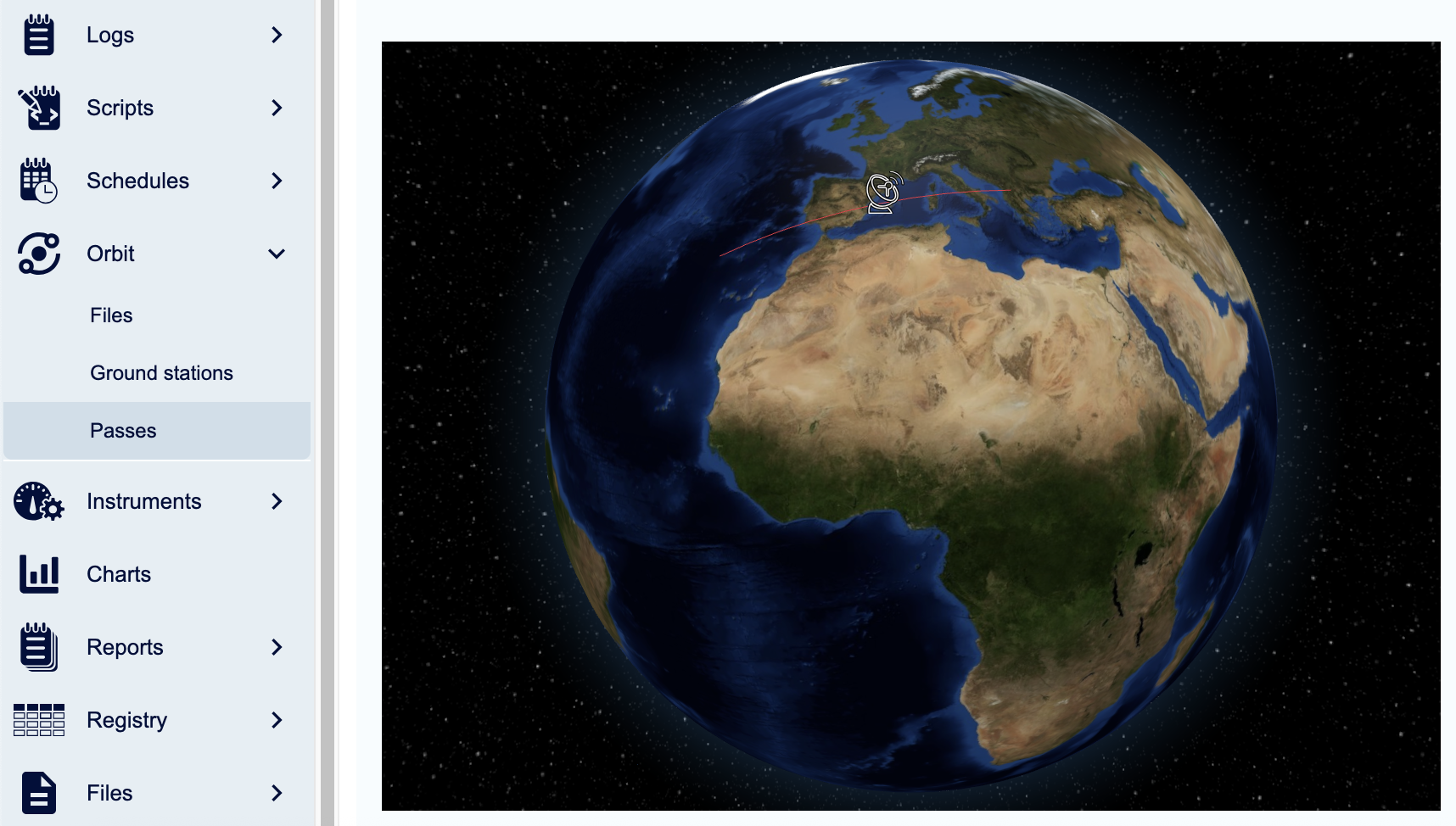
The view shows ground station position, satellite pass arc during the visibility for the ground station and the current satellite position. In addition to the standalone view for each pass in Orbit module screens, a new dashboard widget has been added with similar functionality, but additional filtering options for a time window we want to monitor:
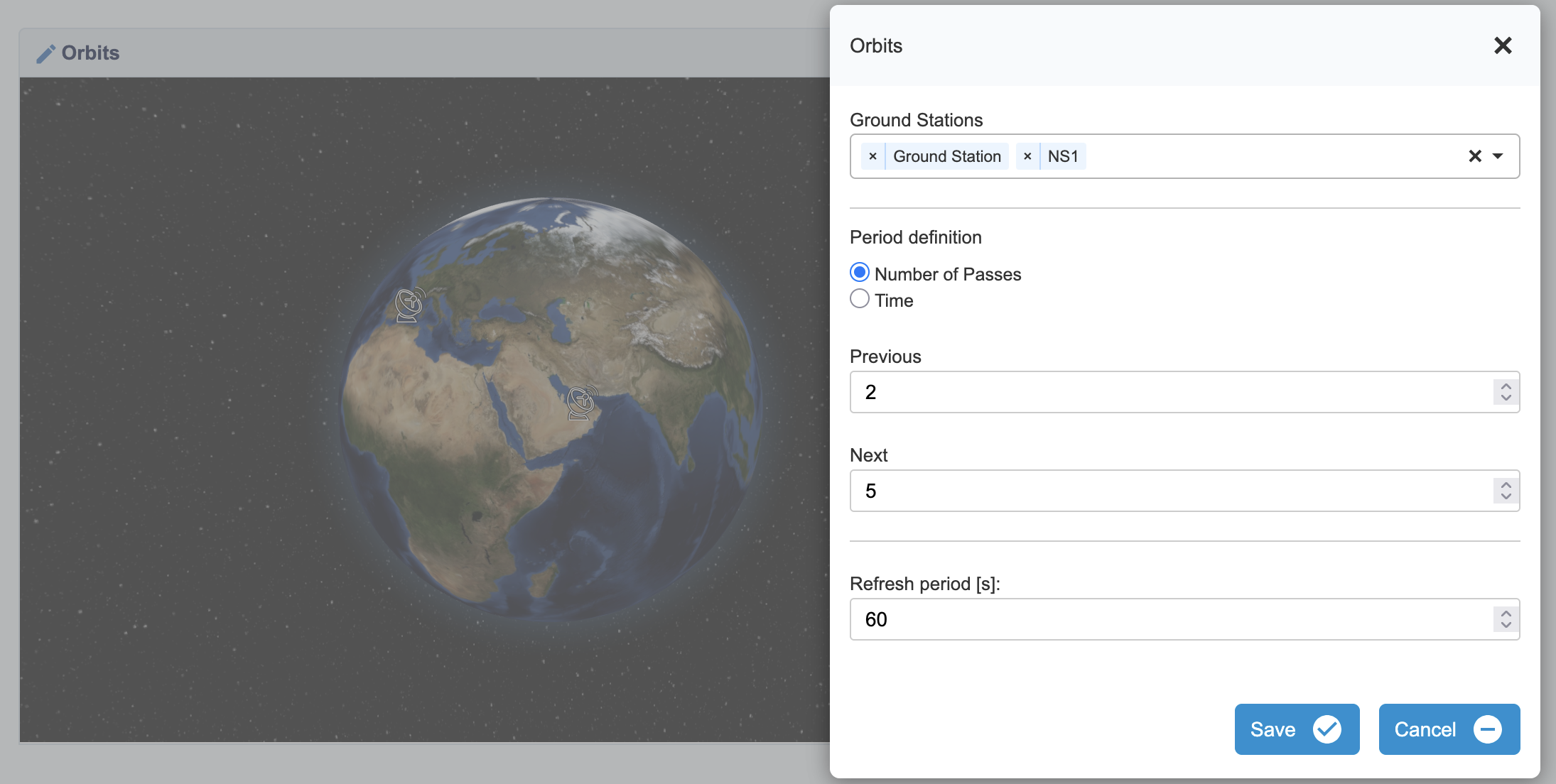
7. Other mid-size features
7.1 Spectrum Analyser improvements
Our Spectrum Analyser dashboard widget now offers enhanced features, including the ability to add and track markers, along with performance improvements of up to 60 FPS, up from the previous 1 FPS.
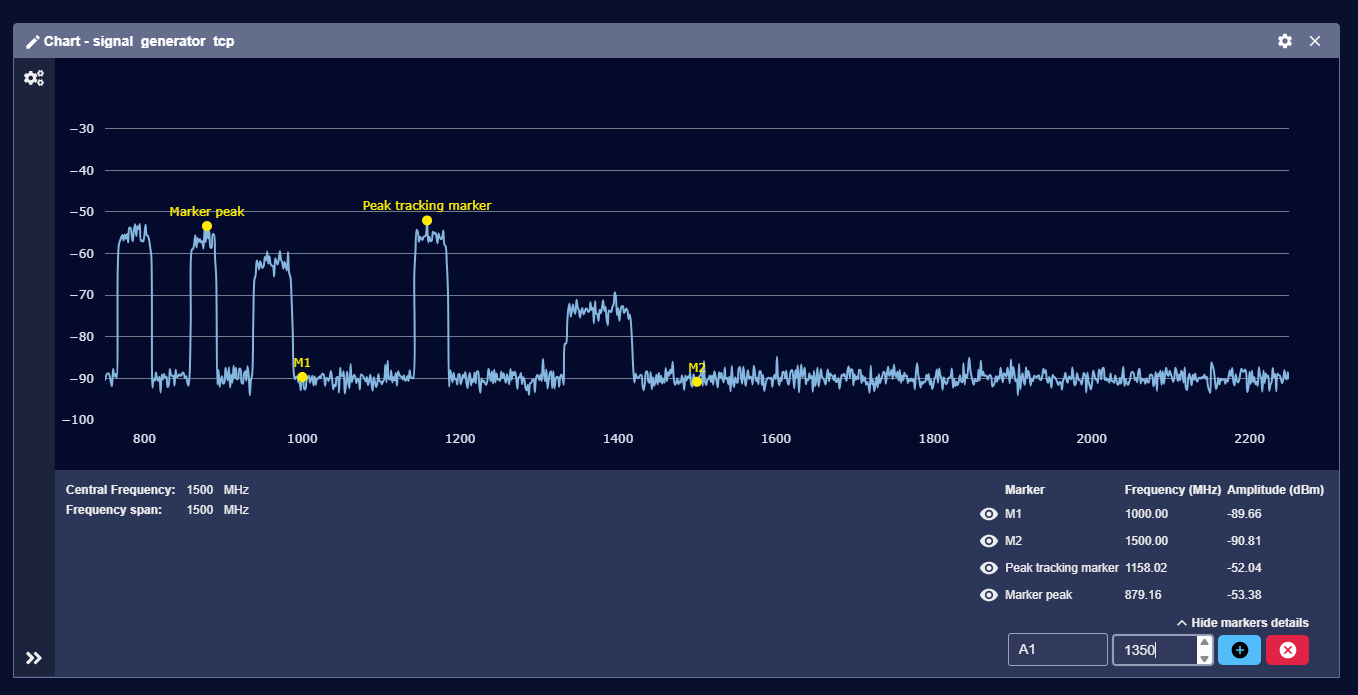
7.2 Default user procedure
Monica installations no longer result in a default admin user. It is instead created using a new wizard upon opening the GUI for the first time. This ensures better security compliance with some environments.
7.3 Menu management
It’s now possible to reorder the main menu or add new items to it, pointing to Monica or even 3rd party pages. The configuration can be saved per user or globally.
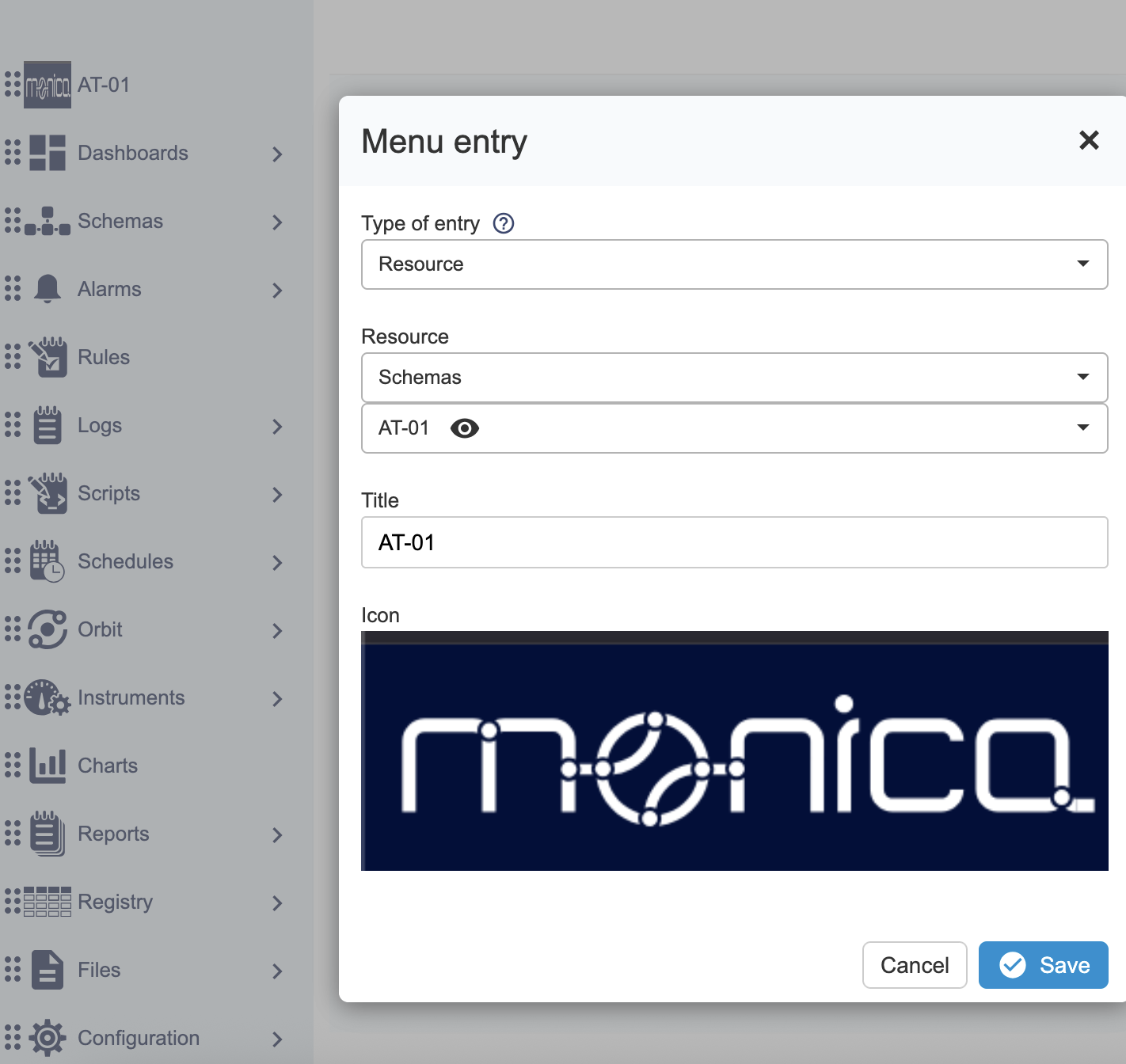
7.4 Driver Editor - bulk parameter edit
Similar to Schema shape bulk edit, the Driver Editor has been improved with the same feature. Common fields will have their values displayed, while distinct values will be marked with <multiple values> placeholder text.

What’s next
Recently, Monica v7.4 has been released. We'll be sharing the full details soon.
We are already working on exciting new features for v8.0.
Stay tuned for the next updates!
Contact us
Your feedback is welcomed. We would love to hear about your challenges and needs. Get in touch with us today to discuss how we can we work together to improve your satellite and ground operations.

